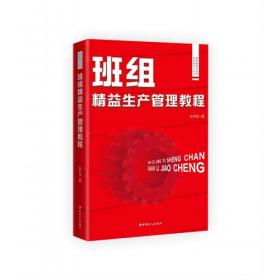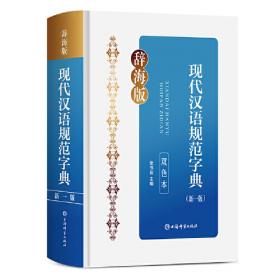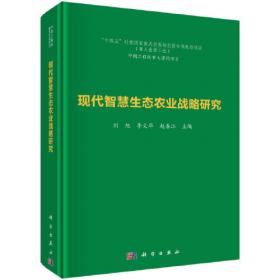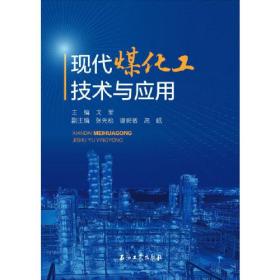现代热力学(英文版)
出版时间:
2009-09
版次:
1
ISBN:
9787030255655
定价:
72.00
装帧:
精装
开本:
16开
纸张:
胶版纸
页数:
278页
正文语种:
简体中文
5人买过
-
Thisbookcanbeusedasatextbookinuniversitiesandcollegesforthemodernizationofthethermodynamicsdiscipline.Therearenottoomuchmathematicaldeductionsinthisbook,soitisalsosuitableforreaderstoreadandlearnbythemselves.
Basedontheauthorsexperiences,themodernizationofthethermodynamicsdisciplineisnoteasy,sothebookiswritteninthreelevels.Thefirstlevelisabout800wordsinPreface;thesecondlevelisanoutlineofabout8000wordsinChapter1,whichwasoriginallyareplyin2006toareviewer,apersondescribedinhisownwordsasbeing"throughmypersonaljourneythroughtherealmofequilibriumthermodynamicsandnonequilibriumthermodynamicsandthroughmyownworkthereinoverdecades";andthethirdlevelisthedetaileddiscussionsinotherpartsofthewholebook. 1AnOutlineofModernThermodynamics
1.1ChallengestotheSecondLawofThermodynamicsComingfromTwoSides
1.2RootofPuzzlement:CarnotTheorem
1.3UncertaintyorIncompletenessofClausiusInequality
1.4ClassificationofThermodynamicsintheCurrent21stCentury
1.5ATypicalCaseofNondissipativeThermodynamics:NonequilibriumPhaseDiagrams
1.6ATypicalCaseofDissipativeThermodynamics:SpiralReactions
1.7Out-of-ThermodynamicsforReciprocalRelations
1.8Out-of-ThermodynamicsModelforDissipativeStructures
1.9DissipationDecreaseTheorem
1.10SomeFundamentalConceptsandDefinitions
1.11ConclusionofthisOutline
References
2BriefHistoriesofThermodynamics
2.1AncientKnowledgeonHeat
2.2CarnotTheorem
2.3TheNatureofHeat
2.4TheFirstLawofThermodynamics
2.5AbsoluteScaleofTemperature
2.6TheSecondLawofThermodynamics
2.7EntropyandEntropyIncreasePrinciple
2.8MacroscopicRulesforCollectiveMotionofaLargeAmountofParticles
2.9DevelopmentandLimitationofClassicalThermodynamics
2.10ExplorationofModernThermodynamicsinthe20thCentury
References
3FundamentalsofClassicalThermodynamics
3.1SomeFundamentalConceptsinClassicalThermodynamics
3.1.1SystemandSurroundings
3.1.2EquilibriumStateandNonequilibriumState
3.1.3StateVariablesandStateFunctions
3.1.4Reversible,IrreversibleandQuasistaticProcesses
3.1.5SpontaneousandNonspontaneousProcesses
3.2MathematicalExpressionsofBasicLawsofThermodynamics
3.2.1ExpressionoftheFirstLawofThermodynamics
3.2.2ExpressionoftheSecondLawofThermodynamics
3.3ClassicalEquilibriumThermodynamics
3.4ClassicalNonequilibriumThermodynamics
3.5CriterionofEquilibrium
3.6CalculationofEntropyChanges
3.7RelationshipbetweenGibbsFreeEnergyandTorp
3.8RelationshipbetweenChemicalPotentialandTorp
3.9GibbsFreeEnergyChangesofChemicalReactions
References
4FundamentalsofModernThermodynamics
4.1Introduction
4.2GeneralMathematicalExpressionsofBasicLaws
4.3LocalEquilibriumApproximation
4.4CalculationsofEntropyProductions
4.4.1ForHeatConduction
4.4.2ForHeatConductiontogetherwithMatterTransport
4.4.3GeneralExpressionsforEntropyProductionCalculations
4.5ThermodynamicCouplingofModemThermodynamics
4.6Schrrdingers"NegativeEntropy"Conjecture
4.7ChemiosmoticCouplingTheoryforATPBiosynthesis
4.8ClassicalandTraditionalClassificationsofThermodynamics
4.8.1ClassicalClassificationsofThermodynamics
4.8.2TraditionalClassificationsofThermodynamics
4.9ModemClassificationofThermodynamics
4.10ExtendedCamotTheorem
4.11Dissipation(orEntropyProduction)DecreaseTheorem
References
5DissipativeThermodynamics
5.1DissipativeThermodynamics
5.2LinearDissipativeThermodynamicsandOnsagerReciprocalRelations
5.3CyclicalReactions
5.4EntropyProductionMinimizationPrinciple
5.5ApproximationofOnsagerReciprocalRelations
5.6NonlinearDissipativeThermodynamicsandPrigogineDissipativeStructures
5.7BemardPattern
5.8LaserEmission
5.9ChemicalOscillationand"Brusselator"
5.10TuringStructuresandPropagatingWaves
5.11PrigoginesCarelessnessonThermodynamicCoupling
5.12ThermodynamicCouplingModelofSpiralReactions
References
6ThermodynamicsCouplingModelforActivatedLow-PressureDiamondGrowth
6.1High-PressureDiamondSyntheses
6.2ActivatedLow-PressureDiamondGrowthfromtheVaporPhase
6.3PreferentialEtchingKineticModelofSAH
6.4SomeThermodynamicModelsofthe1980s
6.4.1QuasiequilibriumModel
6.4.2SurfaceReactionThermodynamicsModel
6.4.3Defect-InducedStabilizationModel
6.5ThermodynamicCouplingModel
6.6MechanismofThermodynamicCouplinginLow-PressureDiamondGrowth
6.7OtherThermodynamicModelsin1990sforLow-PressureDiamondGrowth
6.7.1UnifiedBarrierModel
6.7.2ChargedClusterModel
6.7.3Under-SaturatedCrystalGrowthModel
6.8"Nanothermodynamics"Modelin2005
References
7NondissipativeThermodynamicsandBinaryNonequilibriumPhaseDiagrams
7.1AnABCinMathematics
7.2TheNatureofCALPHAD
7.3NondissipativeThermodynamicsandNonequilibriumPhaseDiagrams
7.4ThermodynamicDataofActivatedGraphite
7.4.1GibbsFreeEnergyMethod
7.4.2EquilibriumConstantMethod
7.5CalculationPrincipleofNonequilibriumPhaseDiagrams
7.6CalculationMethodofNonequilibriumPhaseDiagrams
7.6.1DetailedCalculationSteps
7.6.2DifferentKindsofPhaseLines
7.7T-XNonequilibriumPhaseDiagramsforC-HSystem
7.8T-p-XNonequilibriumPhaseDiagramsforC-HandC-OSystems
7.9T-XNonequilibriumPhaseDiagramsforC-(H+O)Systems
7.10GasCompositionNonequilibriumPhaseDiagramsforC-HSystems
7.11InfluencesofGasCompositiononOrientationofCrystalGrowth
References
8NondissipativeThermodynamicsandTernaryNonequilibriumPhaseDiagrams
8.1BachmannsEmpiricalPhaseDiagram
8.2ProjectiveNonequilibriumPhaseDiagramsforC-H-OSystems
8.3InfluencesofTandponProjectivePhaseDiagramsforC-H-OSystems
8.4MarinellisCriticalExperimentalPhaseDiagram
8.5Cross-SectionNonequilibriumPhaseDiagramsforC-H-OSystems
8.6NonequilibriumPhaseDiagramsforC-H-XSystems
8.7NonequilibriumPhaseDiagramsforLow-PressurecBNSyntheses
8.8EvaluationsandBriefSummaryonNonequilibriumPhaseDiagrams
References
9Carat-SizeLow-PressureDiamondsandOtherThermodynamicIssues
9.1Carat-SizeGem-QualityLow-PressureDiamondGrowth
9.2FluctuationofEquilibriumStatesandStationaryNonequilibriumStates
9.3SomeDiscussionsonClassificationofThermodynamics
9.4Whatis"Thermodynamics"andWhatis"theSecondLawofThermodynamics"
9.5ThermodynamicWeaknessofPhysicists--ComplexSystems
9.6About"NonequilibriumThermodynamicsofSmallSystems"
9.7ConclusionofthisBook
References
Index
-
内容简介:
Thisbookcanbeusedasatextbookinuniversitiesandcollegesforthemodernizationofthethermodynamicsdiscipline.Therearenottoomuchmathematicaldeductionsinthisbook,soitisalsosuitableforreaderstoreadandlearnbythemselves.
Basedontheauthorsexperiences,themodernizationofthethermodynamicsdisciplineisnoteasy,sothebookiswritteninthreelevels.Thefirstlevelisabout800wordsinPreface;thesecondlevelisanoutlineofabout8000wordsinChapter1,whichwasoriginallyareplyin2006toareviewer,apersondescribedinhisownwordsasbeing"throughmypersonaljourneythroughtherealmofequilibriumthermodynamicsandnonequilibriumthermodynamicsandthroughmyownworkthereinoverdecades";andthethirdlevelisthedetaileddiscussionsinotherpartsofthewholebook.
-
目录:
1AnOutlineofModernThermodynamics
1.1ChallengestotheSecondLawofThermodynamicsComingfromTwoSides
1.2RootofPuzzlement:CarnotTheorem
1.3UncertaintyorIncompletenessofClausiusInequality
1.4ClassificationofThermodynamicsintheCurrent21stCentury
1.5ATypicalCaseofNondissipativeThermodynamics:NonequilibriumPhaseDiagrams
1.6ATypicalCaseofDissipativeThermodynamics:SpiralReactions
1.7Out-of-ThermodynamicsforReciprocalRelations
1.8Out-of-ThermodynamicsModelforDissipativeStructures
1.9DissipationDecreaseTheorem
1.10SomeFundamentalConceptsandDefinitions
1.11ConclusionofthisOutline
References
2BriefHistoriesofThermodynamics
2.1AncientKnowledgeonHeat
2.2CarnotTheorem
2.3TheNatureofHeat
2.4TheFirstLawofThermodynamics
2.5AbsoluteScaleofTemperature
2.6TheSecondLawofThermodynamics
2.7EntropyandEntropyIncreasePrinciple
2.8MacroscopicRulesforCollectiveMotionofaLargeAmountofParticles
2.9DevelopmentandLimitationofClassicalThermodynamics
2.10ExplorationofModernThermodynamicsinthe20thCentury
References
3FundamentalsofClassicalThermodynamics
3.1SomeFundamentalConceptsinClassicalThermodynamics
3.1.1SystemandSurroundings
3.1.2EquilibriumStateandNonequilibriumState
3.1.3StateVariablesandStateFunctions
3.1.4Reversible,IrreversibleandQuasistaticProcesses
3.1.5SpontaneousandNonspontaneousProcesses
3.2MathematicalExpressionsofBasicLawsofThermodynamics
3.2.1ExpressionoftheFirstLawofThermodynamics
3.2.2ExpressionoftheSecondLawofThermodynamics
3.3ClassicalEquilibriumThermodynamics
3.4ClassicalNonequilibriumThermodynamics
3.5CriterionofEquilibrium
3.6CalculationofEntropyChanges
3.7RelationshipbetweenGibbsFreeEnergyandTorp
3.8RelationshipbetweenChemicalPotentialandTorp
3.9GibbsFreeEnergyChangesofChemicalReactions
References
4FundamentalsofModernThermodynamics
4.1Introduction
4.2GeneralMathematicalExpressionsofBasicLaws
4.3LocalEquilibriumApproximation
4.4CalculationsofEntropyProductions
4.4.1ForHeatConduction
4.4.2ForHeatConductiontogetherwithMatterTransport
4.4.3GeneralExpressionsforEntropyProductionCalculations
4.5ThermodynamicCouplingofModemThermodynamics
4.6Schrrdingers"NegativeEntropy"Conjecture
4.7ChemiosmoticCouplingTheoryforATPBiosynthesis
4.8ClassicalandTraditionalClassificationsofThermodynamics
4.8.1ClassicalClassificationsofThermodynamics
4.8.2TraditionalClassificationsofThermodynamics
4.9ModemClassificationofThermodynamics
4.10ExtendedCamotTheorem
4.11Dissipation(orEntropyProduction)DecreaseTheorem
References
5DissipativeThermodynamics
5.1DissipativeThermodynamics
5.2LinearDissipativeThermodynamicsandOnsagerReciprocalRelations
5.3CyclicalReactions
5.4EntropyProductionMinimizationPrinciple
5.5ApproximationofOnsagerReciprocalRelations
5.6NonlinearDissipativeThermodynamicsandPrigogineDissipativeStructures
5.7BemardPattern
5.8LaserEmission
5.9ChemicalOscillationand"Brusselator"
5.10TuringStructuresandPropagatingWaves
5.11PrigoginesCarelessnessonThermodynamicCoupling
5.12ThermodynamicCouplingModelofSpiralReactions
References
6ThermodynamicsCouplingModelforActivatedLow-PressureDiamondGrowth
6.1High-PressureDiamondSyntheses
6.2ActivatedLow-PressureDiamondGrowthfromtheVaporPhase
6.3PreferentialEtchingKineticModelofSAH
6.4SomeThermodynamicModelsofthe1980s
6.4.1QuasiequilibriumModel
6.4.2SurfaceReactionThermodynamicsModel
6.4.3Defect-InducedStabilizationModel
6.5ThermodynamicCouplingModel
6.6MechanismofThermodynamicCouplinginLow-PressureDiamondGrowth
6.7OtherThermodynamicModelsin1990sforLow-PressureDiamondGrowth
6.7.1UnifiedBarrierModel
6.7.2ChargedClusterModel
6.7.3Under-SaturatedCrystalGrowthModel
6.8"Nanothermodynamics"Modelin2005
References
7NondissipativeThermodynamicsandBinaryNonequilibriumPhaseDiagrams
7.1AnABCinMathematics
7.2TheNatureofCALPHAD
7.3NondissipativeThermodynamicsandNonequilibriumPhaseDiagrams
7.4ThermodynamicDataofActivatedGraphite
7.4.1GibbsFreeEnergyMethod
7.4.2EquilibriumConstantMethod
7.5CalculationPrincipleofNonequilibriumPhaseDiagrams
7.6CalculationMethodofNonequilibriumPhaseDiagrams
7.6.1DetailedCalculationSteps
7.6.2DifferentKindsofPhaseLines
7.7T-XNonequilibriumPhaseDiagramsforC-HSystem
7.8T-p-XNonequilibriumPhaseDiagramsforC-HandC-OSystems
7.9T-XNonequilibriumPhaseDiagramsforC-(H+O)Systems
7.10GasCompositionNonequilibriumPhaseDiagramsforC-HSystems
7.11InfluencesofGasCompositiononOrientationofCrystalGrowth
References
8NondissipativeThermodynamicsandTernaryNonequilibriumPhaseDiagrams
8.1BachmannsEmpiricalPhaseDiagram
8.2ProjectiveNonequilibriumPhaseDiagramsforC-H-OSystems
8.3InfluencesofTandponProjectivePhaseDiagramsforC-H-OSystems
8.4MarinellisCriticalExperimentalPhaseDiagram
8.5Cross-SectionNonequilibriumPhaseDiagramsforC-H-OSystems
8.6NonequilibriumPhaseDiagramsforC-H-XSystems
8.7NonequilibriumPhaseDiagramsforLow-PressurecBNSyntheses
8.8EvaluationsandBriefSummaryonNonequilibriumPhaseDiagrams
References
9Carat-SizeLow-PressureDiamondsandOtherThermodynamicIssues
9.1Carat-SizeGem-QualityLow-PressureDiamondGrowth
9.2FluctuationofEquilibriumStatesandStationaryNonequilibriumStates
9.3SomeDiscussionsonClassificationofThermodynamics
9.4Whatis"Thermodynamics"andWhatis"theSecondLawofThermodynamics"
9.5ThermodynamicWeaknessofPhysicists--ComplexSystems
9.6About"NonequilibriumThermodynamicsofSmallSystems"
9.7ConclusionofthisBook
References
Index
查看详情

 占位居中
占位居中














